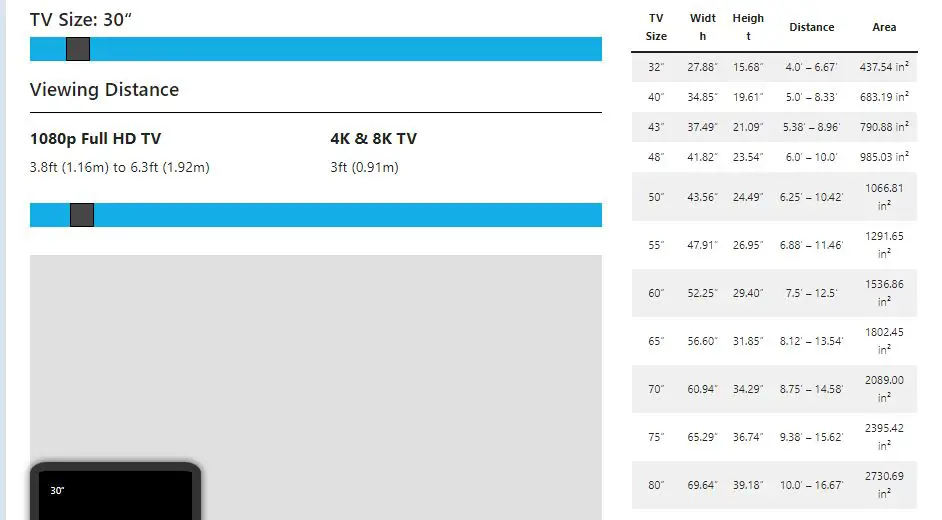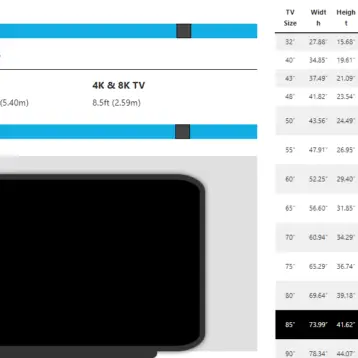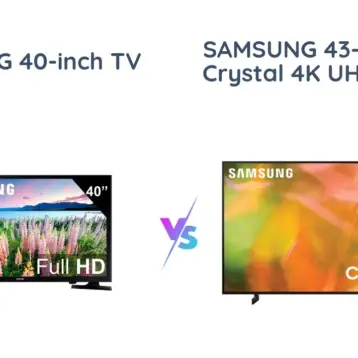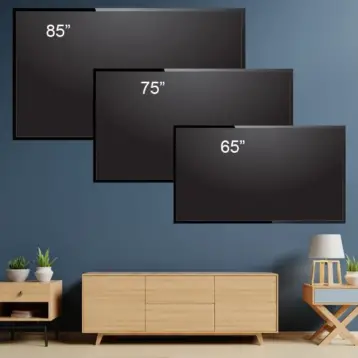In the vast landscape of television sets, size plays a pivotal role in determining the viewing experience. With technological advancements constantly reshaping the industry, consumers are presented with a myriad of options, each varying in size, resolution, and features. Among these choices, the 30-inch TV occupies a unique position, offering a balance between space efficiency and immersive viewing. In this article, we delve into the dimensions of a 30-inch TV, exploring its significance and implications for consumers.
The Basics: What is a 30-Inch TV?

A 30-inch TV refers to the diagonal measurement of the screen from one corner to the opposite corner. This measurement excludes the bezel, which is the frame surrounding the screen. The actual dimensions of the TV, including the bezel, may vary depending on the manufacturer and model. However, the diagonal measurement remains consistent, serving as a standard reference point for consumers when comparing TV sizes.
Also Read – How Big Is A 32 Inch TV: Dimensions, Size, And Price
Dimensions of a 30-Inch TV
To comprehend the physical footprint of a 30-inch TV, it’s essential to examine its dimensions in width, height, and depth. While the diagonal measurement provides an indication of screen size, understanding the overall dimensions is crucial, especially for those considering placement within their living space.
Width
The width of a 30-inch TV typically ranges between 26 to 28 inches, inclusive of the bezel. This measurement determines the horizontal span of the television, influencing its compatibility with entertainment centers, wall mounts, and other furniture.
Height
In terms of height, a 30-inch TV generally stands around 15 to 17 inches tall, again including the frame or border . This measurement signifies the vertical extent of the television and is a significant factor for determining its visibility within a room.
Depth
The depth of a 30-inch TV varies between 2 to 4 inches, encompassing both the thickness of the display panel and any additional components housed within the television casing. Understanding the depth is crucial for assessing the TV’s profile when mounted on a wall or placed on a stand.
Also Read – How Big is 24 Inch TV: Dimentions & How to Choose Right One
Implications of 30-Inch TV Dimensions:
The dimensions of a 30-inch TV carry several implications, influencing factors such as viewing distance, room layout, and aesthetic appeal. Understanding these implications can assist consumers in making informed decisions when selecting a TV for their home entertainment setup.
Viewing Distance
The optimal viewing distance for a 30-inch TV is typically between 3.5 to 6.5 feet, depending on factors such as screen resolution and personal preference. Placing the TV too close may result in discomfort, while positioning it too far could diminish the immersive viewing experience.
Room Size and Layout
The compact size of a 30-inch TV makes it well-suited for smaller living spaces, such as bedrooms, kitchens, or home offices. Its modest footprint allows for flexible placement options, including mounting on walls or placement on tabletops. However, in larger rooms or open-concept layouts, a 30-inch TV may appear diminutive and fail to deliver an immersive viewing experience.
Considering The Aesthetics
Beyond its functional aspects, the dimensions of a 30-inch TV also contribute to the overall aesthetic of the living space. The sleek profile and modest size make it an attractive choice for minimalist or contemporary interiors. Additionally, the compact form factor allows for seamless integration into existing decor schemes without overwhelming the visual landscape.
Also Read – How Big is 55 Inch TV?: 55-inch TV Dimensions
Advantages of a 30-Inch TV
Despite its modest size, a 30-inch TV offers several advantages that cater to the diverse needs and preferences of consumers.
Space Efficiency
For individuals with limited living space or those seeking a secondary TV for additional rooms, a 30-inch TV provides an ideal balance between screen size and space efficiency. Its compact dimensions make it easy to incorporate into various environments without sacrificing valuable real estate.
Affordability
Compared to larger TV sizes, a 30-inch TV typically comes with a more budget-friendly price tag. This affordability makes it accessible to a broader range of consumers, including students, young professionals, and those on a tight budget.
Versatility
The versatility of a 30-inch TV extends beyond traditional viewing experiences. Its compact size and lightweight construction make it suitable for diverse applications, such as gaming, streaming content, or serving as a secondary monitor for computers or laptops.
Also Read – How Big Is A 40-Inch TV? 40 Inch TV Dimentions
Conclusion
In the realm of home entertainment, the dimensions of a 30-inch TV play a significant role in shaping the viewing experience and integration within living spaces. From its compact footprint to its immersive capabilities, a 30-inch TV offers a compelling blend of size, functionality, and affordability. By understanding its dimensions and implications, consumers can make informed decisions that align with their preferences and lifestyle requirements. Whether as a primary TV in smaller living spaces or a versatile secondary display, the 30-inch TV continues to hold its ground as a popular choice among discerning consumers.
As technology evolves and consumer preferences continue to shift, the appeal of the 30-inch TV persists, reaffirming its status as a timeless staple in the world of home entertainment.
How Big Is a 50-Inch TV? 50 Inch TV Dimentions.
How Big Is A 43 Inch TV? | 43 Inch TV Dimensions in CM, MM, Inch & Feet










